Do We Need a New Florence Charter? The Importance of Authenticity for the Maintenance of Historic Gardens and Other Historic Greenery Layouts in the Context of Source Research (Past) and Taking into Account the Implementation of the Sustainable Development Idea (Future)
Abstract
:1. Introduction
2. Materials and Methods
- firstly, the discussion of authenticity in relation to historic gardens and other forms of historic greenery were analyzed, taking into account various scopes and aspects in which this issue were addressed; in this context, both official documents (Appendix A) as well as contemporary theories and opinions of researchers were taken into consideration, including an interdisciplinary approach to the issue of authenticity; at the same time, attention was paid to the ecological aspects of protection of historic green complexes in the context of sustainable development;
- secondly, types of sources and methods of analyzing them and then using the results obtained in this way in research on historic gardens in the context of their authenticity, and then in activities of a conservation character; at the same time, attention was drawn to the risks for authenticity resulting from the lack of a critical approach to the content of some sources; recommendations on the use of source materials contained in official documents were also compiled (Appendix B).
3. Results
3.1. The Issue of Authenticity
- “design and scale of its various parts as on its decorative features”
- “plant or inorganic materials adopted for each of its parts” [1] (Art. 9.)
3.2. Analysis of Sources
3.2.1. Written Sources
3.2.2. Iconographic Sources
4. Discussion
5. Summary
- Historic greenery as an element of heritage;
- Authenticity in historic green complexes in research and conservation strategies;
- Authenticity of historic green complexes and sustainable development;
- New techniques and tools in research on the authenticity of historic greenery layouts.
Funding
Institutional Review Board Statement
Informed Consent Statement
Data Availability Statement
Conflicts of Interest
Appendix A
| Official Doctrinal Documents | |
| Authenticity | |
| NO. | DOCUMENT |
| 1. | Venice Charter, 1964⋯ (International Charter for the Conservation and Restoration of Monuments and Sites) Art. 9. The process of restoration is a highly specialized operation. Its aim is to preserve and reveal the aesthetic and historic value of the monument and is based on respect for original material and authentic documents. It must stop at the point where conjecture begins… |
| 2. | The Burra Charter 1979/1981/1988/1999/2013 Art. 3.2. Changes to a place should not distort the physical or other evidence it provides, not be based on conjecture. Explanatory Notes to Art. 5.2. A cautions approach is needed, as understanding of cultural significance may change. |
| 3. | Florence Charter, 1981 Art. 9. The authenticity of a historic garden depends as much on the design and scale of its various parts as on its decorative features and on the choice of plant or inorganic materials adopted for each of its parts. Art. 11. …the preservation of the garden in an unchanged condition requires both prompt replacements when required and a long-term programme of periodic renewal… Art. 12. …with the aim to determine the species initially grown and to preserve them. Art. 21. The work of maintenance and conservation, the timing of which is determined by season and brief operations which serve to restore the garden’s authenticity, must always take precedence over the requirements of public use. |
| 4. | Nara Document on Autenticity, 1994 Art. 9. Knowledge and understanding of these sources of information, in relation to original and subsequent characteristics of the cultural heritage, and their meaning, is a requisite basis for assessing all aspects of authenticity. Art.10. Authenticity, considered in this way and affirmed in the Charter of Venice, appears as the essential qualifying factor concerning values. The understanding of authenticity plays a fundamental role in all scientific studies of the cultural heritage, in conservation and restoration planning, as well as within the inscription procedures used for the World Heritage Convention and other cultural heritage inventories. Art. 13. Depending on the nature of the cultural heritage, its cultural context, and its evolution through time, authenticity judgements may be linked to the worth of a great variety of sources of information. Aspects of the sources may include form and design, materials and substance, use and function, traditions and techniques, location and setting, and spirit and feeling, and other internal and external factors. Appendix A. Efforts to determine authenticity in a manner respectful of cultures and heritage diversity requires approaches which encourage cultures to develop analytical processes and tools specific to their nature and needs. Such approaches may have several aspects in common: • efforts to ensure assessment of authenticity involve multidisciplinary collaboration and the appropriate utilization of all available expertise and knowledge; • efforts to ensure attributed values are truly representative of a culture and the diversity of its interests, in particular monuments and sites; • efforts to document clearly the particular nature of authenticity for monuments and sites as a practical guide to future treatment and monitoring; • efforts to update authenticity assessments in light of changing values and circumstances. Art. 5. Particularly important are efforts to ensure that attributed values are respected, and that their determination includes efforts to build, as far as possible, a multidisciplinary and community consensus concerning these values. |
| 5. | The Declaration of San Antonio (1996) Art. B. 1. Authenticity and identity (The authenticity of our cultural heritage is directly related to our cultural identity); 2. Authenticity and history (An understanding of the history and significance of a site over time are crucial elements in the identification of its authenticity); 3. Authenticity and materials (The material fabric of a cultural site can be a principal component of its authenticity); 4. Authenticity and social value; 5. Authenticity in dynamic and static sites; 6. Authenticity and stewardship; 7. Authenticity and economics. Art. C. 1.c. That further consideration be given to the proofs of authenticity so that indicators may be identified for such a determination in a way that all significant values in the site may be set forth. The following are some examples of indicators: i. Reflection of the true value. That is, whether the resource remains in the condition of its creation and reflects all its significant history. i. Integrity. That is, whether the site is fragmented; how much is missing, and what are the recent additions. iii. Context. That is, whether the context and/or the environment correspond to the original or other periods of significance; and whether they enhance or diminish the significance. iv. Identity. That is, whether the local population identify themselves with the site, and whose identity the site reflects. v. Use and function. That is, the traditional patterns of use that have characterized the site. Art. C. 4.g. Since in conserving the authenticity of cultural landscapes the overall character and traditions, such as patterns, forms, land use and spiritual value of the site may take precedence over material and design aspects, that a clear relationship between values and the proof of authenticity be established. 4.h. That expert multi-disciplinary assessments become a requirement for the determination of authenticity in cultural landscapes, and that such expert groups include social scientists who can accurately articu-late the values of the local communities. 4.i. That the authenticity of cultural landscapes be protected prior to major changes in land use and to the construction of large public and private projects, by requiring responsible authorities and financing organizations to undertake environmental impact studies that will lead to the mitigation of negative impacts upon the landscape and the traditional values associated with these sites. |
Appendix B
| Official Doctrinal Documents | |
| Relationship to Sources | |
| NO. | DOCUMENT |
| 1. | Burra Charter 1979/1981/ 1988/1999/2013 Art. 6.1. The cultural significance of a place and other issues affecting its future are best understood by a sequence of collecting and analysing information before making decisions. Art. 19. Restoration is appropriate only if there is sufficient evidence of an earlier state of the fabric. |
| 2. | Florence Charter, 1981 Art. 15. No restoration work and, above all, no reconstruction work on a historic garden shall be undertaken without thorough prior research to ensure that such work is scientifically executed and which will involve everything from excavation to the assembling of records relating to the garden in question and to similar gardens. Art. 16. Restoration work must respect the successive stages of evolution of the garden concerned. In principle, no one period should be given precedence over any other, except in exceptional cases where the degree of damage or destruction affecting certain parts of a garden may be such that it is decided to reconstruct it on the basis of the traces that survive or of unimpeachable documentary evidence. |
| 3. | Nara Document on Autenticity, 1994 Art.11. All judgements about values attributed to cultural properties as well as the credibility of related information sources may differ from culture to culture, and even within the same culture. It is thus not possible to base judgements of values and authenticity within fixed criteria. |
| 4. | XI’AN Declaration on the conservation of the setting of heritage structures, sites and areas, 2005 Art. 3. Understanding, documenting and interpreting the setting is essential to defining and appreciating the heritage significance of any structure, site or area. Art. 4. Understanding the setting in an inclusive way requires a multi-disciplinary approach and the use of diverse information sources. Sources include formal records and archives, artistic and scientific descriptions, oral history and traditional knowledge, the perspectives of local and associated communities as well as the analysis of views and vistas. Cultural traditions, rituals, spiritual practices and concepts as well as history, topography, natural environment values, use and other factors contribute to create the full range of a setting’s tangible and intangible values and dimensions. The definition of settings should carefully articulate the character and values of the setting and its relationship to the heritage resource. |
Appendix C
| Topics for Discussion | |
| I. Historic greenery as an element of heritage | 1. “Garden as a place of change” (opera aperta, palimpsest) versus “garden as a place of remembrance”. |
| 2. “Garden existence” in research on the authenticity of gardens versus adaptation to contemporary needs. | |
| 3. Garden as a scientific and engineering project in the context of authenticity. | |
| 4. Old agrotechnical methods and techniques as a research subject and the conservation issue in the context of authenticity. | |
| 5. Historic green areas as a subject of interdisciplinary research. | |
| 6. Spirit of Place in research on the authenticity of historic greenery areas. | |
| 7. Historic greenery areas as an element of heritage in the postmodern narrative. | |
| 8. Historic greenery areas in the discussion about heritage and new conservation strategies/models. | |
| 9. The importance of ethical attitudes in the management of cultural heritage in the context of historical green areas. | |
| 10. Cultural conditions in the assessment of the value and authenticity of historical green areas. | |
| 11. Authenticity of historical green areas in the light of social identification. | |
| II. Authenticity of historic green areas in research and conservation strategies | 1. Conservation creation/creative conservation in the context of authenticity considerations. |
| 2. The use of sources in research on the authenticity of historic greenery areas and in conservation practice (written sources). | |
| 3. The use of sources in research on the authenticity of historic greenery areas and in conservation practice (iconographic sources). | |
| 4. The use of sources in research on the authenticity of historic greenery areas and in conservation practice (cartographic sources). | |
| 5. Authenticity of the natural world of historic greenery areas in the context of source research. | |
| 6. Authenticity of the natural world of historic greenery areas as a subject of research and conservation practice in the context of climate change and new diseases and parasites threats | |
| III. Authenticity of historic greenery areas and sustainable development | 1. A sustainable approach to maintaining and restoring historic green areas, taking into account aspects related to authenticity. |
| 2. The role of historic greenery in the strategy of protecting biological diversity and its authenticity. | |
| 3. Historic greenery as an element of green infrastructure of cities. | |
| 4. The influence of tourism on maintaining authenticity of gardens. | |
| IV. New techniques and tools in research on authenticity of historic greenery areas | 1. Possibilities and importance of research on historic greenery areas conducted with the use of modern techniques and tools (LIDAR, TSL), electromagnetic conductivity (EM), ground-penetraiting radar (GPR) |
| 2. Historic greenery areas and virtual reality, opportunities and threats to authenticity. | |
References
- ICOMOS-IFLA. Historic Gardens—The Florence Charter. 1981. Available online: https://www.icomos.org/images/DOCUMENTS/Charters/gardens_e.pdf (accessed on 7 September 2020).
- ICOMOS-IFLA. Document on Historic Urban Parks. 2017. Available online: https://www.icomos.org/images/DOCUMENTS/General_Assemblies/19th_Delhi_2017/Working_Documents-First_Batch-August_2017/GA2017_6-3-2_HistoricUrbanPublicParks_EN_final20170730.pdf (accessed on 9 September 2020).
- Agenda 21. Available online: https://sustainabledevelopment.un.org/content/documents/Agenda21.pdf (accessed on 8 September 2020).
- Jagiełło, M.; Brzezowski, W. Autentyzm a Rekonstrukcja Zabytkowych Zespołów Ogrodowych. In Dziedzictwo Architektoniczne: Rekonstrukcje i Badania Obiektów; Łużyniecka, E., Ed.; Oficyna Wydawnicza Politechniki Wrocławskiej: Wrocław, Poland, 2017; pp. 74–84. Available online: https://www.dbc.wroc.pl/publication/41252 (accessed on 10 January 2021).
- Jagiełło, M.; Brzezowski, W. Nie Tylko Bukszpany. O Autentyzmie Ogrodowej Szaty Roślinnej w Formach Żywopłotowych i Topiarycznych. In Dziedzictwo Architektoniczne: Restauracje i Adaptacje Zabytków; Łużyniecka, E., Ed.; Oficyna Wydawnicza Politechniki Wrocławskiej: Wrocław, Poland, 2018; pp. 23–40. Available online: https://www.dbc.wroc.pl/publication/86547 (accessed on 10 January 2021).
- Jagiełło, M.; Brzezowski, W. Autentyzm Świata Przyrodniczego w Ogrodach Europejskich: Rośliny Egzotyczne. In Dziedzictwo Architektoniczne: W Kręgu Świata Przyrodniczego i Budowli Miejskich; Łużyniecka, E., Ed.; Oficyna Wydawnicza Politechniki Wrocławskiej: Wrocław, Poland, 2019; pp. 5–16. Available online: https://www.dbc.wroc.pl/publication/142344 (accessed on 10 January 2021).
- Jagiełło, M.; Brzezowski, W. Ogrody na Śląsku. T. 1, Od Średniowiecza do XVII Wieku; Oficyna Wydawnicza Politechniki Wrocławskiej: Wrocław, Poland, 2014. [Google Scholar]
- Brzezowski, W.; Jagiełło, M. Ogrody na Śląsku. T. 2, Barok; Oficyna Wydawnicza Politechniki Wrocławskiej: Wrocław, Poland, 2017. [Google Scholar]
- ICOMOS. International Charter for the Conservation and Restoration of Monuments and Sites (the Venice Charter 1964). Available online: https://www.icomos.org/charters/venice_e.pdf (accessed on 8 September 2020).
- ICOMOS. The Nara Document on Authenticity. 1994. Available online: https://www.icomos.org/charters/nara-e.pdf (accessed on 8 September 2020).
- The London Charter for the Computer-Based Visualisation of Cultural Heritage. 2008. Available online: https://www.londoncharter.org/index.html (accessed on 8 September 2020).
- ICOMOS, Xi’an Declaration on the Conservation of the Setting of Heritage Structures, Sites and Areas. 2005. Available online: https://www.icomos.org/charters/xian-declaration.pdf (accessed on 8 September 2020).
- Burra Charter. The Australia ICOMOS Charter for Places of Cultural Significance Australia ICOMOS Incorporated International Council on Monuments and Sites. 2013. Available online: https://australia.icomos.org/wp-content/uploads/The-Burra-Charter-2013-Adopted-31.10.2013.pdf (accessed on 8 September 2020).
- ICOMOS. The Declaration of San Antonio. 1996. Available online: https://www.icomos.org/en/resources/charters-and-texts/179-articles-en-francais/ressources/charters-and-standards/188-the-declaration-of-san-antonio (accessed on 8 September 2020).
- Hennebo, D. Gartengeschichte–Gartendenkmalpflege. Versuch einer Bilanz. Das Gartenamt; Patzer Verlag: Hannover, Germany, 1985; pp. 168–182. [Google Scholar]
- Sigel, B. Alles Erhaltene wird zum redenden Zeugnis. Das Gartendenkmal mit der Elle des Baudendenkmalpflegers gemessen. In Die Gartenkunst; Wernersche Verlags GmbH: Biblis Germany, 1993; pp. 273–282. [Google Scholar]
- Majdecki, L. Ochrona i Konserwacja Zabytkowych Założeń Ogrodowych; Wydawnictwo Naukowe PWN: Warsaw, Poland, 1993. [Google Scholar]
- Kovarik, I. Historische Gärten und Parkanlagen als Gegenstand eines Denkmal-orientirten Naturschutzes. In Naturschutz und Denkmalpflege; Kowarik, I., Schmidt, E., Sigel, B., Eds.; vdh Hochschulverlag an der ETH: Zürich, Switzerland, 1998; Available online: File:///C:/Users/mj/Downloads/Sigeletal.1998WegezueinemDialogimGarten%20(1).pdf (accessed on 10 January 2021).
- De Jong, E.; Schmidt, E.; Sigel, B. …sie Hätten Nicht Unter einer Glasglocke Gestandenm Sondern im Lebendigen Strom der Geschichte Eine Einführung in das Thema. In Der Garten—Ein Ort des Wandels. Perpectiven für Die Denkmalpflege; De Jong, E., Schmidt, E., Sigel, B., Eds.; Hochschil-Verlag an der ETH: Zürich, Switzerlad, 2006. [Google Scholar]
- Sikora, D. Specyfika Działań Konserwatorskich w Ogrodach Regularnych. Kur. Konserw. 2010, 7, 34–42. Available online: http://bazhum.muzhp.pl/media//files/Kurier_Konserwatorski/Kurier_Konserwatorski-r2010-t-n7/Kurier_Konserwatorski-r2010-t-n7-s32-42/Kurier_Konserwatorski-r2010-t-n7-s32-42.pdf (accessed on 10 January 2021).
- Sikora, D. Konserwacja ogrodów regularnych; SGGW: Warsaw, Poland, 2011. [Google Scholar]
- Hajós, G. Der historische Garten—Ein Ort des Wandels ode rein Ort der Erinnerungen? Die Gart. 2006, 2, 385–394. [Google Scholar]
- Hajós, G. Rekonstruktion in der Gartendenkmalpflege, eine Problemstellung. In Rekonstruktion in der Gartendenkmalpflege; Hajos, G., Wolschke-Bulmahn, J., Eds.; Zentrum für Gartenkunst und Landschaftsarchitektur (CGL) Leibniz Universität Hannover: Hannover, Germany, 2007; pp. 18–26. [Google Scholar]
- Hajós, G. Notes on the problem of authenticity in historical gardens and parks in the light of the Austrian experience. J. Gard. Hist. 2012, 15, 67–83. Available online: https://www.researchgate.net/publication/254237272_Notes_on_the_problem_of_authenticity_in_historic_gardens_and_parks_in_the_light_of_the_Austrian_experience (accessed on 20 February 2021).
- Rhotert, S. Fragen an die Gartendenkmalpflege. In Rekonstruktion in der Gartendenkmalpflege; Hajos, G., Ed.; Zentrum für Gartenkunst und Landschaftsarchitektur (CGL) Leibniz Universität Hannover: Hannover, Germany, 2007; pp. 60–62. Available online: https://www.cgl.uni-hanno-ver.de/fileadmin/cgl/Forschung/Publikationen/Broschueren/Broschu__re__Rekonstruktion_in_der_Gartendenkmalpflege_.pdf (accessed on 12 January 2021).
- Lowenthal, D. Passage du Temps dans le Paysage. Le Globe. Rev. Genev. Géographie 2009, 149, 177–179. Available online: https://www.persee.fr/doc/globe_0398-3412_2009_num_149_1_1564 (accessed on 20 February 2021).
- Scheitzer, S. Möglichkeiten und Grenzen artefaktischen Wissens in dem Bild- und Textquellen einer Fragilen Gattung; Manuscript: Würzburg, Germany, 2011. [Google Scholar]
- Schmidt, E. Erhaltung historischer Pflanzenbestände. Möglichkeiten und Grenzen. Die Grtenkunst 1997, 2, 270–273. [Google Scholar]
- Schmidt, E. Die Charta von Florenz nach dreissig Jahren kritisch betrachtet. In Denkmalpflege in Bremen; Das Landesamt für Denkmalpflege Bremen: Bremen, Germany, 2012; pp. 83–91. [Google Scholar]
- Troll, H. Rekonstruktion in der Gartendenkmalpflege. Annäherungen. In Rekonstruktion in der Gartendenkmalpflege; Hajos, G., Ed.; Zentrum für Gartenkunst und Landschaftsarchitektur (CGL) Leibniz Universität Hannover: Hannover, Germany, 2007; pp. 60–62. Available online: https://www.cgl.uni-hanno-ver.de/fileadmin/cgl/Forschung/Publikationen/Broschueren/Broschu__re__Rekonstruktion_in_der_Gartendenkmalpflege_.pdf (accessed on 18 January 2021).
- Troll, H. Długi cień Karty Florenckiej—Ewolucja Standardów Konserwacji Zabytków Niemczech. Ochrona Zabytków; Narodowy Instytut Dziedzictwa: Warszawa, Poland, 2016; Volume 1, pp. 73–92. Available online: http://cejsh.icm.edu.pl/cejsh/element/bwmeta1.element.desklight-fc8d27f3-c8cc-4b4d-988e-01a5ad2de541 (accessed on 12 January 2021).
- Wimmer, C.A. Drei Hauptkomponenten in der Behandlung von historischen Gärten. In Rekonstruktion on der Gartendenkmal-pflege; Hajos, G., Ed.; Zentrum für Gartenkunst und Landschaftsarchitektur (CGL) Leibniz Universität Hannover: Hannover, Germany, 2007; pp. 38–40. Available online: https://www.cgl.uni-hanno-ver.de/fileadmin/cgl/Forschung/Publikationen/Broschueren/Broschu__re__Rekonstruktion_in_der_Gartendenkmalpflege_.pdf (accessed on 10 January 2021).
- Gulliano, P.; Pomatto, E.; Gaino, W.; Devecchi, M.; Larcher, F. New Challenges for Historic Gardens’ Restoration: A Holistic Approach for the Royal Park of Moncalieri Castle (Turin Metropolitan Area, Italy). Sustainability 2020, 12, 10067. [Google Scholar] [CrossRef]
- Funsten, C.; Borsellino, V.; Schimmenti, E. A Systematic Literature Review of Historic Garden Management and Its Economic Aspects. Sustainability 2020, 12, 10679. [Google Scholar] [CrossRef]
- Prigioniero, A.; Sciarrillo, R.; Spuria, L.; Zuzolo, D.; Marziano, M.; Scarano, P.; Tartaglia, M.; Guarino, C. Role of historic gardens in biodiversity-conservation strategy: The example of the Giardino Inglese of Reggia di Caserta (UNESCO) (Italy). Plant Biosyst. Int. J. Deal. All Asp. Plant Biol. 2020, 155, 1–11. Available online: https://www.tandfonline.com/doi/full/10.1080/11263504.2020.1810812 (accessed on 10 January 2021). [CrossRef]
- Oishi, Y. Urban Heat Island Effects on Moss Gardens in Kyoto, Japan. Landsc. Ecol. Eng. 2019, 15, 177–184. Available online: https://link.springer.com/article/10.1007/s11355-018-0356-z (accessed on 10 December 2020). [CrossRef]
- Counsell, J. An evolutionary Approach to Digital Recording and Information about Heritage Sites. In Proceedings of the 2001 Conference on Virtual Reality, Archeology, and Cultural Heritage—VAST’01, Glyfada, Greece, 28–30 November 2001; ACM Press: Glyfada, Greece, 2001; pp. 33–41, 362. Available online: https://dl.acm.org/doi/10.1145/584993.584999 (accessed on 10 January 2021).
- Zapłata, R. Autentyzm Zabytkowej Architektury i Palimpsest w Przestrzeni Historycznej—Nowe Media a Prezentacja Dziedzictwa Kulturowego. Architectus 2016, 1, 97–114. Available online: http://www.architectus.arch.pwr.wroc.pl/45/45_09.pdf (accessed on 12 January 2021).
- Buchaniec, A.J. Autentyzm—Podstawowa Wartość w Konserwacji Zabytków Architektury. Ph.D. Thesis, Wydział Architektury Politechniki, Cracow, Poland, 1999. Available online: http://fbc.pionier.net.pl/details/nntsbsn (accessed on 10 November 2020).
- ICOMOS, Authenticity. A Bibliography. 2010. Available online: https://www.icomos.org/centre_documentation/bib/Biblio_authenticity_2010.pdf (accessed on 10 January 2021).
- Rouba, B.J. Autentyczność i Integralność Zabytków. Ochr. Zabyt. 2008, 4, 37–57. Available online: https://www.nid.pl/upload/iblock/19c/19cf1f3005c3c71f2e0052ee43e22ffe.pdf (accessed on 18 January 2021).
- Valéry, M.-F.; Toquin, A. Jardins du Moyen Âge; La Renaissance du Livre: Tournai, France, 2002. [Google Scholar]
- European Landscape Convention, Florence. 20 December 2000. Available online: https://rm.coe.int/1680080621 (accessed on 12 January 2021).
- Dutkiewicz, J.F. Sentymentalizm, Autentyzm, Automatyzm; Ochrona Zabytków Narodowy Instytut Dziedzictwa: Warszawa, Poland, 1961; pp. 3–16. Available online: http://yadda.icm.edu.pl/yadda/element/bwmeta1.element.desklight-b6b63f8c-ebf2-452c-9dfa-ed248eb20f57 (accessed on 12 January 2021).
- Dezalier d’Argenville, A.-J. La Théorie et la Pratique du Jardinage; Paris 1709. Available online: https://gallica.bnf.fr/ark:/12148/btv1b8626274z/f7.image (accessed on 14 January 2021).
- Swirida, I. W Poszukiwaniu Ukrytych Znaczeń. Park naturalny XVIII Stulecia a Wolnomularstwo. Ars Regia 1993, 2, 7–40. [Google Scholar]
- Wegner, F. Der Freimaureregarten; Kulturförderverein Ruhrgebiet E.V. KFVR: Gladback, Germany, 2014. [Google Scholar]
- Lichaczow, D. Poezja Ogrodów; Zakład Narodowy im. Ossolińskich: Wrocław, Poland; Warsaw, Poland; Kraków, Poland, 1991. [Google Scholar]
- de Caus, S. Les Raisons des Forces Mouvantes; Paris 1615. Available online: https://library.si.edu/digital-library/book/raisonsdesforce00caus (accessed on 10 January 2021).
- Schickhart, H. Beschreibung einer Reiß, welche … Friderich Hertzog zu Würtemberg vnnd Teck, … im Jahr 1599 selb neundt, auß dem Landt zu Würtemberg, in Italiam Gethan; Mömpelgard, 1602. Available online: https://reader.digitale-sammlungen.de/de/fs1/object/display/bsb11212296_00005.html (accessed on 10 January 2021).
- Ramelli, A. Le Diverse et Artificiose Machine del Capitano Agostino Ramelli; Firenze 1588. Available online: https://digital.sciencehistory.org/works/4b29b614k (accessed on 12 January 2021).
- Böckler, G.A. Architectura Curiosa Nova; Nürnberg ca 1664. Available online: https://blogs.ethz.ch/digital-collections/2012/08/17/georg-andreas-bockler-architectura-curiosa-nova-nurnberg-1664/ (accessed on 18 January 2021).
- Smit, T. The Lost Gardens of Heligan; Orion Publishing: London, UK, 2000. [Google Scholar]
- Thoday, P. Science and Craft in Understanding Historic Gardens and Their Management. In Gardens & L in Historic Building Conservation; Harney, M., Ed.; John Wiley & Sons, LTD.: Oxford, UK, 2014; pp. 141–148. [Google Scholar]
- Myczkowski, Z.; Wowczak, J. Kreacja konserwatorska na przykładzie ogrodów wilanowskich. Aura 2010, 9, 10–14. [Google Scholar]
- Ciołek, G.; Chrabelski, K. Uwagi o Potrzebie i Metodzie Odbudowy Zabytkowych Ogrodów. Ochrona Zabytków 1949, 1, 15–18. Available online: http://yadda.icm.edu.pl/yadda/element/bwmeta1.element.desklight-538a588b-75ed-4682-b19f-a46dbc2eadc0 (accessed on 10 January 2021).
- Landsberg, L. The Medieval Garden; University of Toronto Press: Toronto, ON, Canada, 2003. [Google Scholar]
- Jellicoe, G.; Jellicoe, S.; Goode, P.; Lancaster, M. The Oxford Companion to Gardens; Oxford University Press: Oxford, NY, USA, 2001; pp. 96–112. [Google Scholar]
- Piwocki, K. Zabytek rezerwat, park kultury: Muzeum w plenerze. Ochr. Zabyt. 1961, 14, 54–55. [Google Scholar]
- Zachwatowicz, J. Ochrona Zabytków w Polsce; Polonia: Warsaw, Poland, 1965. [Google Scholar]
- Kowalski, K. Od zabytku do dyskursu. O kilku Źródłach Współczesnej Definicji Dziedzictwa. Zeszyty Naukowe Uniwersytetu Jagiellońskiego. Pr. Etnogr. 2017, 45, 1–14. Available online: https://www.ejournals.eu/Prace-Etnograficzne/2017/45-1-2017/art/10504/ (accessed on 15 January 2021).
- van Buren, A.H. Reality and Literary Romance in the Parc of Hesdin. In Medieval Gardens; Macdougall, E.B., Ed.; Dumbarton Oaks: Washington, WA, USA, 1983; pp. 115–134. [Google Scholar]
- De’ Crescenzi, P. Ruralia commode; (manuscript) 1304. Ruralium Commodorum Libri Duodecima; Schüssler, Augsburg 1471. 1st edition.
- Mollet, C. Théâtre des plans et jardinages; Paris 1652. Available online: https://gallica.bnf.fr/ark:/12148/bpt6k1042641w.image (accessed on 10 January 2018).
- Estienne, C. Praedium rusticum […]; Lutetia 1554. Available online: https://gallica.bnf.fr/ark:/12148/btv1b8608310f (accessed on 10 February 2018).
- Lauremberg, P. Horticultura; Francofurti ad Moenum 1631. Available online: http://diglib.hab.de/wdb.php?dir=drucke/6-4-oec-1 (accessed on 10 February 2018).
- Hesse, H. Neue Garten-Lust; Leipzig 1696. Available online: https://wellcomecollection.org/works/umwxfdfj/items?canvas=1&langCode=ger&sierraId=b30513285 (accessed on 22 January 2021).
- Camerarius, J. Camerarius Flirilegium, ca 1589, Complete Facsimile ed.; Harald Fischer Verlag: Erlangen, Germany, 2004. [Google Scholar]
- Jagiełło, M. Ogród Caspara Wilhelma Scultetusa (Scholza) na Przedmieściu Świdnickim we Wrocławiu i Jego Powiązania Artystyczne. In Nie Tylko Zamki; Chorowska, M., Ed.; Oficyna Wydawnicza Politechniki Wrocławskiej: Wrocław, Poland, 2005; pp. 471–482. [Google Scholar]
- Volkamer, J.C. Nürnbergische Hesperides; Nürnberg 1708. Available online: http://digital.bibliothek.uni-halle.de/hd/content/pageview/242577 (accessed on 10 September 2020).
- Brzezowski, W. The Silesians and Theories of Garden Art from the 16th to the 18th Century with New Research from the Wrocław University Library collection. Architectus 2013, 1, 3–10. Available online: http://architectus.pwr.edu.pl/online_33_01en.html (accessed on 10 September 2020).
- Zemplin, A. Salzbrunn und Seine Mineralquellen. Im Anhange: Fürstenstein in der Gegenwart und Vergangenheit, Breslau 1822. Available online: https://books.google.pl/books?id=tnJeAAAAcAAJ&printsec=frontcover&hl=pl#v=onepage&q&f=false (accessed on 10 September 2020).
- Addison, J. Remarks on Several Parts of Italy etc. in The Years 1701, 1702, 1703, London 1745. Available online: https://quod.lib.umich.edu/e/ecco/004846589.0001.000?view=toc (accessed on 10 January 2021).
- Kościerza, I. Sublime (w) Historii. Wzniosłość Jako Narzędzie i Przedmiot Badań. Pamięć Spraw. 2012, 11, 115–137. Available online: http://cejsh.icm.edu.pl/cejsh/element/bwmeta1.element.desklight-7b96b0f2-399e-43fb-92a1-b2c2fa739a27 (accessed on 10 January 2021).
- Merian, M. Theatrum Europaeum; Bd. 1–21, Franckfurt 1633–1738. Available online: https://en.wikipedia.org/wiki/Theatrum_Europaeum (accessed on 11 December 2020).
- Merian, M.; Zeiler, M. Topographia Germaniae; Bd. 1–38, (1642–1660s). Available online: https://en.wikipedia.org/wiki/Topographia_Germaniae (accessed on 10 January 2021).
- Vischer, G.M. Topographia Archiducatus Austriae Superiors Modernae, Augsburg 1674. Available online: https://fedora.phaidra.univie.ac.at/fedora/objects/o:25730/methods/bdef:Book/view (accessed on 10 January 2021).
- Vischer, G.M. Topographia Ducatus Styriae; AGRIS: Graz, Austria, 1681. [Google Scholar]
- Wening, M. Historico-Topographica Descriptio; Bd. 1–4, München 1701–1726. Available online: https://bildsuche.digitale-sammlungen.de/index.html?c=viewer&bandnummer=bsb00063022&pimage=00001&v=100&nav=&l=de (accessed on 12 January 2021).
- Dahlberg, E. Suecia Antiqua et Hodierna; Holmiae 1698–1720. Available online: https://suecia.kb.se/F/?func=find-b&local_base=sah (accessed on 15 January 2021).
- Puffendorf von, S. De Rebus a Carolo Gustavo Sveciae Rege Gestis; Norymb 1696. Available online: https://polona.pl/item/samuelis-liberi-baronis-de-pufendorf-de-rebus-a-carolo-gustavo-sveciae-rege-gestis,NzkyMzU3NQ/3/#info:metadata (accessed on 20 January 2021).
- Werner, F.B. Topographia Silesiae; Geheims Staatsarchiv Preussischer Kulturbesitz Berlin-Dahlem: Berlin, Germany, 2018; Volume 1–5. [Google Scholar]
- Werner, F.B. Topographia oder Prodromus Delineati Silesiae Ducatus […], t.1 (Manuscript), ca 1750. Biblioteka Uniwersytecka Wrocław, Odział Rękopisów, sygn.R550. Available online: https://www.bibliotekacyfrowa.pl/dlibra/publication/7114/edition/14302/content (accessed on 20 January 2021).
- Kleiner, S. Vera et Accurata Delineatio Omnium Templorum et Coenobiorum quae Tam in Caesarea Urbe ac Sede Vienna, Austriae; part 1–4; Augsburg 1724–1737. Available online: https://www.e-rara.ch/zut/content/zoom/201865 (accessed on 22 January 2021).
- Falda, G.-B. Ville e Giardini di Roma; Roma. Available online: https://archive.org/stream/gri_33125008634194#page/n5/mode/2up (accessed on 10 January 2021).
- Rossi, G.G. Li Giardini di Roma; Roma 1683. Available online: https://polona.pl/item/li-giardini-di-roma-con-le-loro-piante-alzate-e-vedute-in-prospettiva,NTg1MTk5MQ/16/#info:metadata (accessed on 10 January 2021).
- Diesel, M. Erlustierende Augenweide in Vorstellung herrlicher Gärten und Lustgebäude; Augsburg 1717. Available online: https://bildsuche.digitale-sammlungen.de/index.html?c=viewer&bandnummer=bsb00073534&pimage=7&v=2p&nav=&l=de (accessed on 10 January 2021).
- Blondel, J.-F. De la Distribution des Maisons de Plaisance et de la Décoration des Edifices en Général; Charles-Antoine Jombert: Paris, France, 1737; Volume 1–2, pp. 1737–1738. Available online: https://gallica.bnf.fr/ark:/12148/btv1b8624593q.image (accessed on 20 January 2021).
- Le Rouge, G.-L. Jardins Anglo-Chinois à la Mode; Cahiers 1–21, Paris 1775–1789. Available online: https://gallica.bnf.fr/html/und/images/les-jardins-anglo-chinois-de-georges-louis-lerouge?mode=desktop (accessed on 20 January 2021).
- Czartoryska, I. Myśli Różne o Zakładaniu Ogrodów; Wrocław 1805. Available online: https://polona.pl/item/mysli-rozne-o-sposobie-zakladania-ogrodow,MTIzMzk2OQ/2/#info:metadata (accessed on 20 January 2021).
- Hirschfeld, C.C.L. Theorie der Gartenkunst; Bd. 1–5, Leipzig 1779–1785. Available online: https://digi.ub.uni-heidelberg.de/diglit/hirschfeld1779 (accessed on 20 January 2021).
- de Caus, S. Hortus Palatinus: A Friderico Rege Boemiae Electore Palatino Heidelbergae Exstructu; Frankfurt a. M., 1620. Available online: https://gallica.bnf.fr/ark:/12148/bpt6k15122355.image (accessed on 10 January 2021).
- von Pückler-Muskau, H. Andeutungen über Landschaftsgärtnerei, Verbunden mit der Beschreibung Ihrer Praktischen An-wendung in Muskau; Stuttgart, 1834. Available online: https://digi.ub.uni-heidelberg.de/diglit/pueckler1834a (accessed on 20 January 2021).
- Żaba, A. Drawing of F.B. Werner and geometry. J. Pol. Soc. Geom. Eng. Graph. 2016, 28, 63–70. Available online: http://yadda.icm.edu.pl/yadda/element/bwmeta1.element.baztech-c63e043f-ed01-4b50-b416-b1bfab6d4fec (accessed on 10 January 2021).
- Sroczyńska, K. Zygmunt Vogel, Rysownik Gabinetowy Stanisława Augusta, Zakład Narodowy im; Ossolińskich: Wrocław-Warsaw-Kraków, Poland, 1969. [Google Scholar]
- MAPIRE—Historical Maps Online. Available online: http://mapire.eu (accessed on 20 January 2021).
- Zachariasz, A. Przydatność Archiwalnych Źródeł Kartograficznych dla Współczesnych Badań Krajobrazowych. Prace Komisji Krajobrazu Kulturowego. Pol. Tow. Geogr. 2012, 16, 63–83. Available online: http://krajobraz.kulturowy.us.edu.pl/publikacje.artykuly/16.kartografia/4-zachariasz.pdf (accessed on 5 January 2021).
- Pozzana, M. Giardini Storici. Principi e Techniche della Conservation; Alinea Città: Florence, Italy, 1996. [Google Scholar]
- Mosser, M. The Impossible Quest of the Past. In The Architecture of Western Gardens; Mosser, M., Teyssot, G., Eds.; MIT Press: Cambridge, UK, 1991; pp. 525–529. [Google Scholar]
- Bronwyn, H. Innovation in Conservation, a Timeline History of Australia ICOMOS and the Burra Charter; Sydney 2015. Available online: https://www.researchgate.net/publication/316924146_Innovation_in_Conservation_a_Timeline_History_of_Australia_ICOMOS_and_the_Burra_Charter (accessed on 22 January 2021).
- Heinich, N. La Fabrique du Patrimoine. De la Cathédrale à la Petite Cuillère; Éditions de la Maison des Sciences de L’Homme: Paris, France, 2009. [Google Scholar]
- Obad Šćitaroci, M.; Marić, M.; Vahtar-Jurković, K.; Knežević, K.R. Revitalisation of Historic Gardens—Sustainable Models of Renewal. In Cultural Urban Heritage. Urban Book Series; Springer: Cham, Switzerland, 2019; pp. 423–441. [Google Scholar]
- Cabral, I.; Keim, J.; Engelmann, R.; Kraemer, R.; Siebert, J.; Bonn, A. Ecosystem services of allotment and community gardens: A Leipzig, Germany case study. Urban For. Urban Green. 2017, 23, 44–53. Available online: http://dx.doi.org/10.1016/j.ufug.2017.02.008 (accessed on 10 January 2021). [CrossRef]
- ICOMOS International “Journeys to Authenticity” Initiative. Available online: http://www.icomos.pt/index.php/2-inicial/160-icomos-international-journeys-to-authenticity-initiative (accessed on 8 September 2020).
- Report on the Scientific Council meeting in Marrakesh—14 October 2019. Available online: https://www.icomos.org/en/about-icomos/governance/general-information-about-the-general-assembly/list-of-general-assemblies/annual-general-assembly-2019/69712-report-on-the-2019-scientic-council-meeting-in-marrakesh-october-2019 (accessed on 10 January 2021).

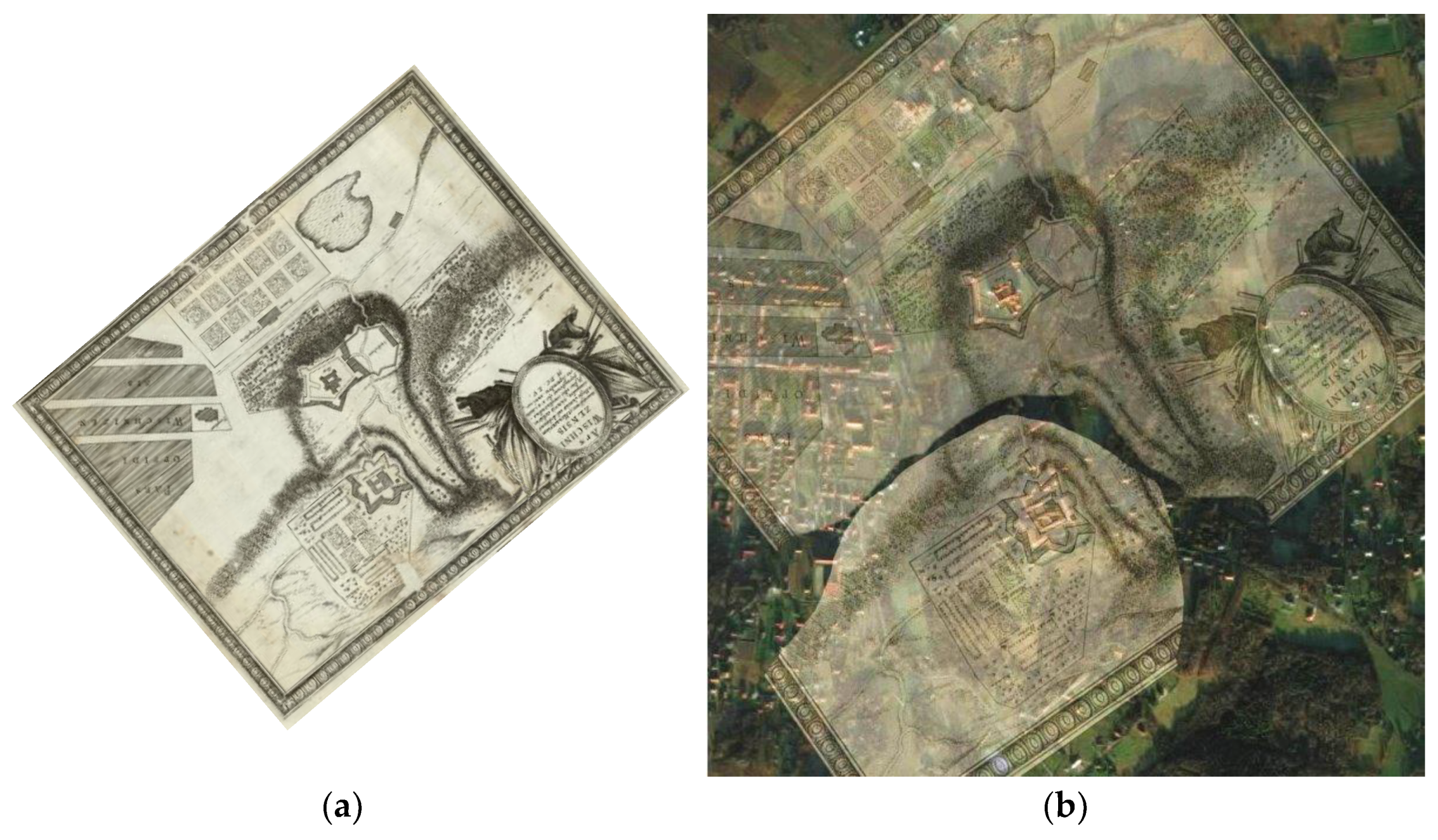
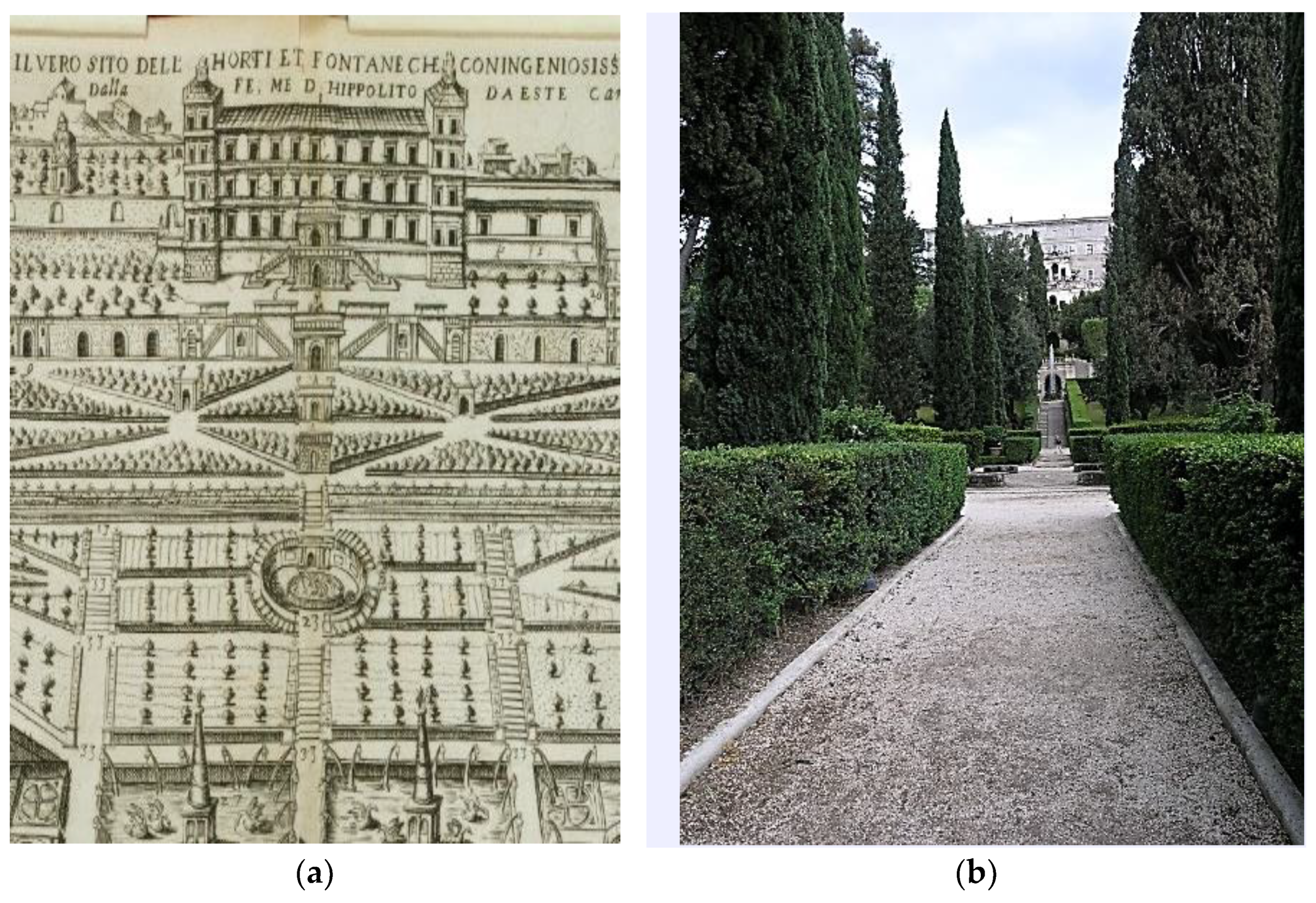


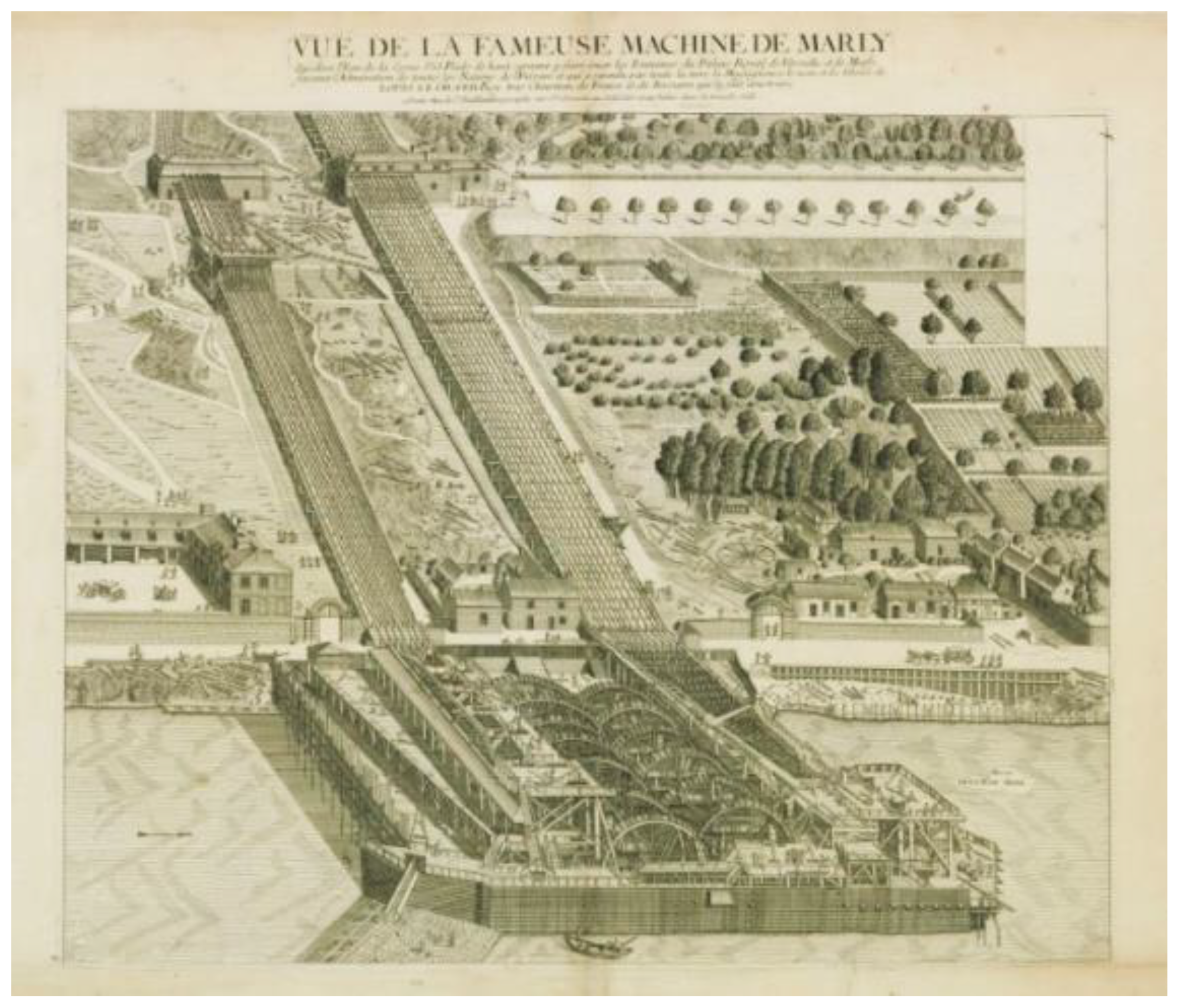
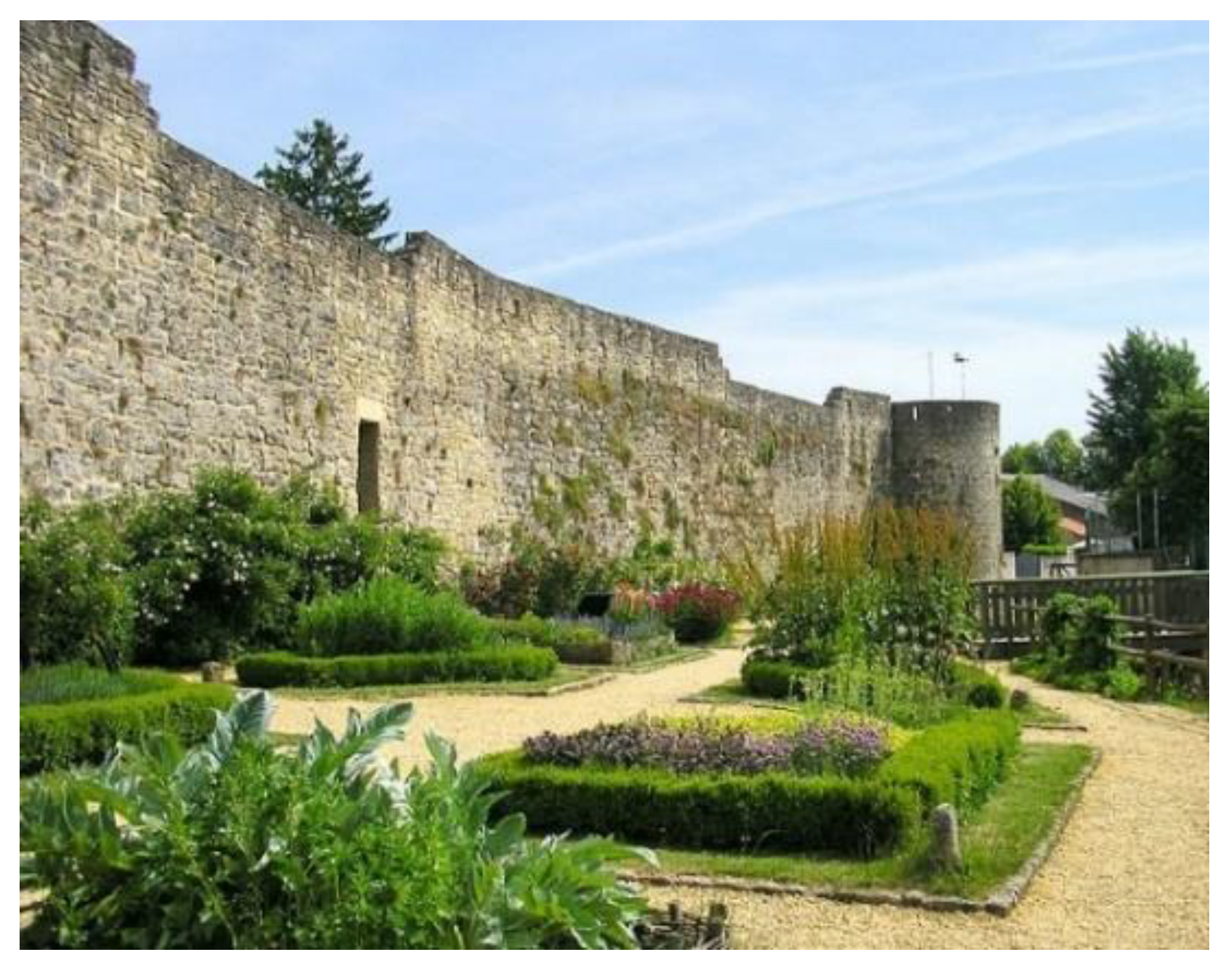
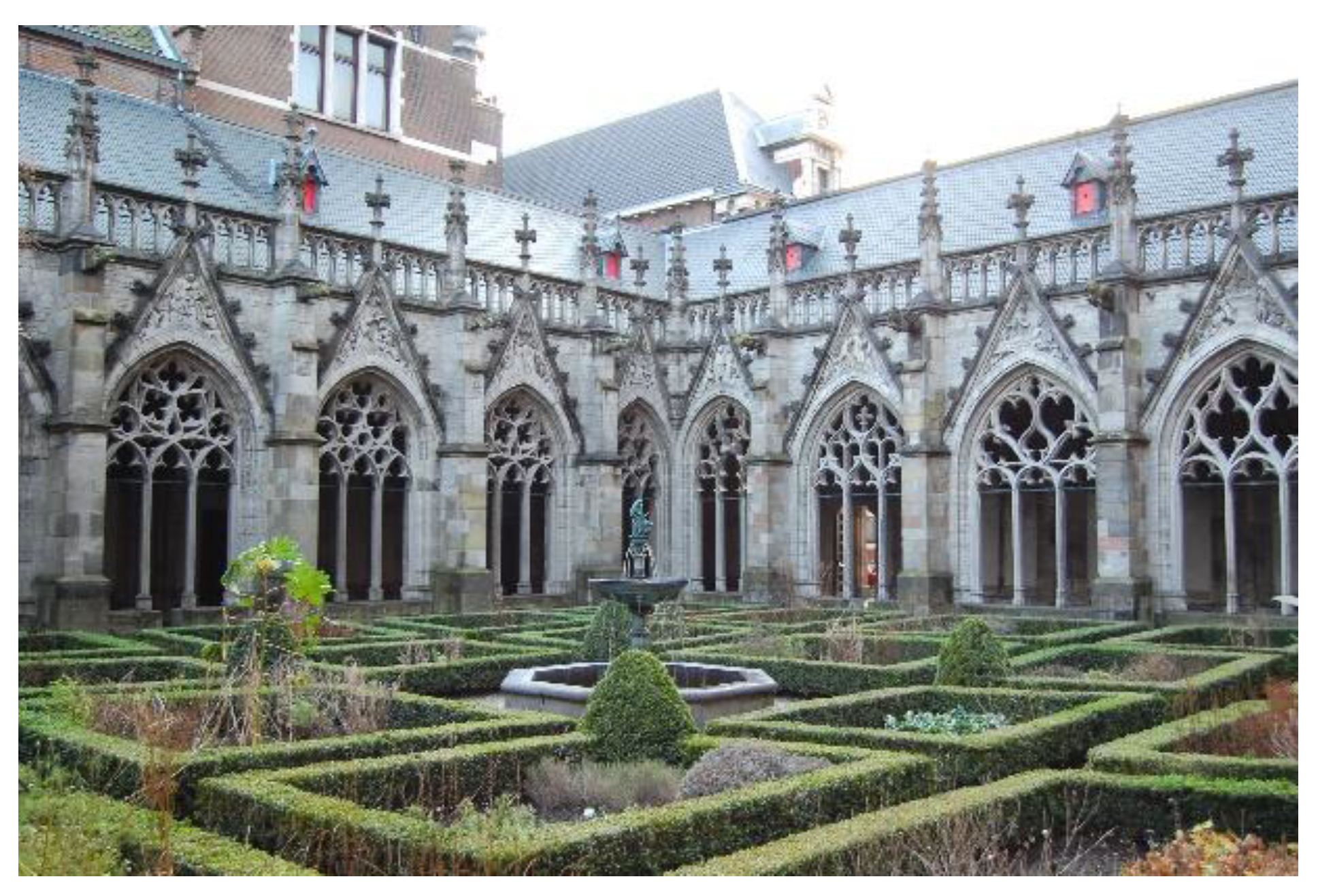


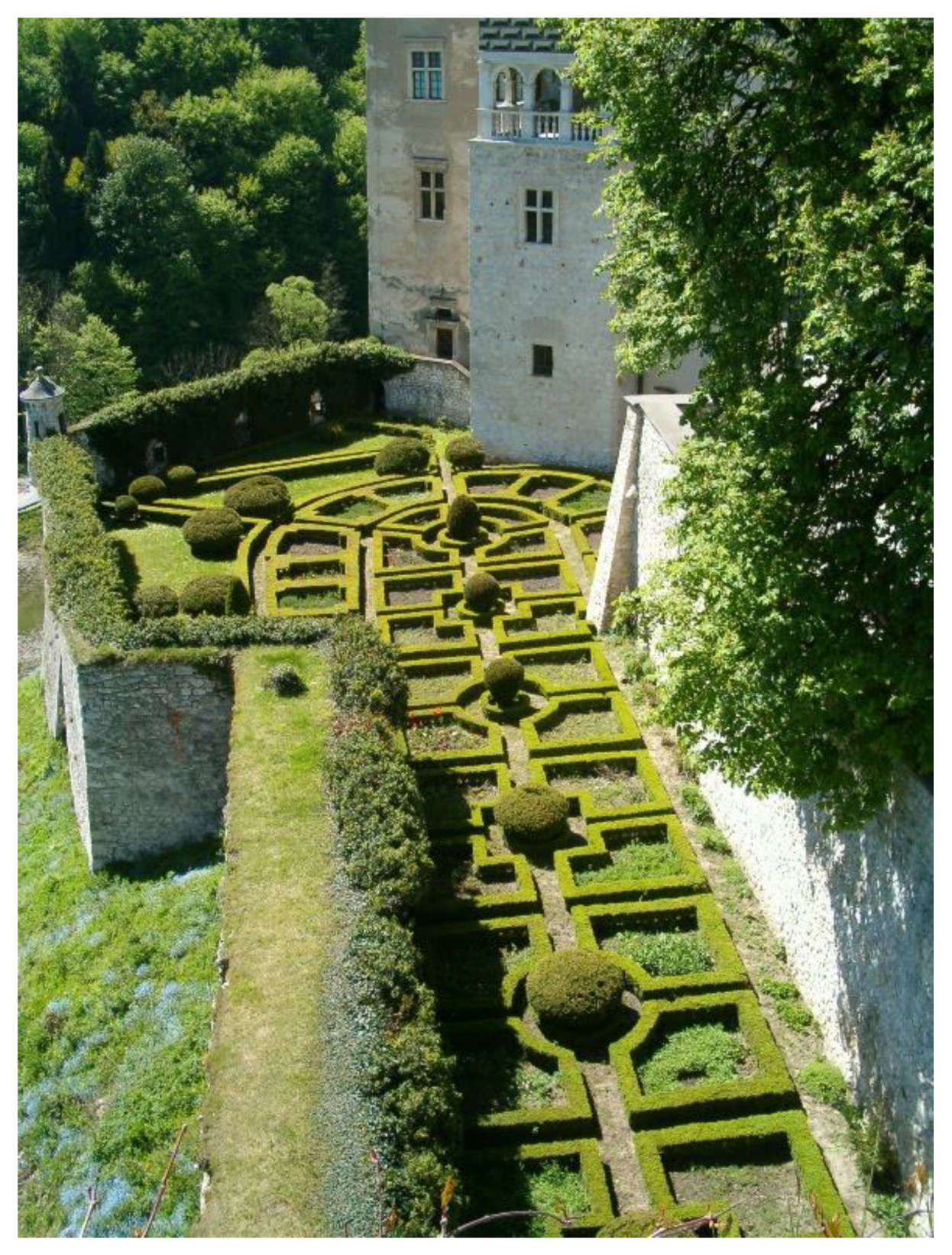
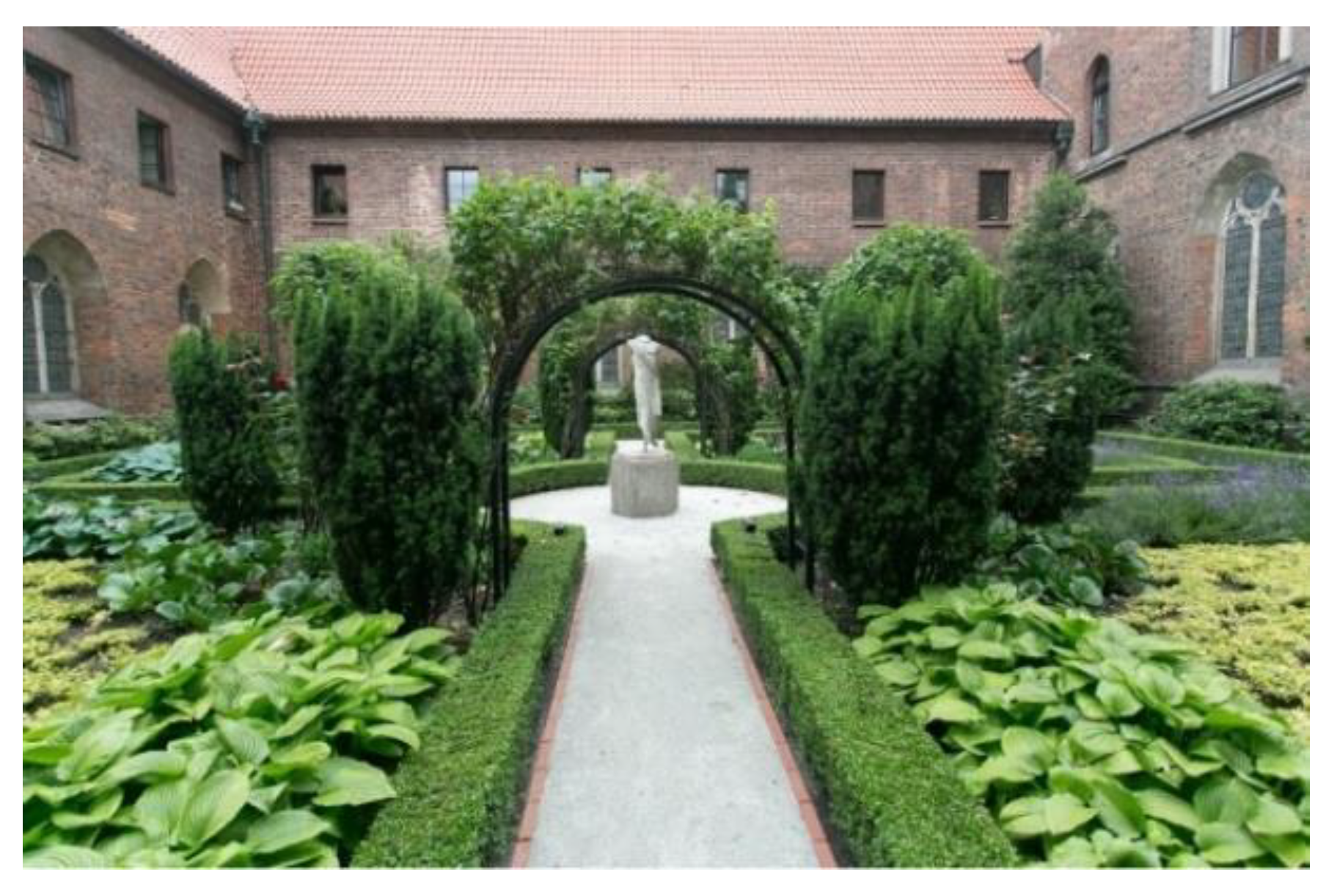


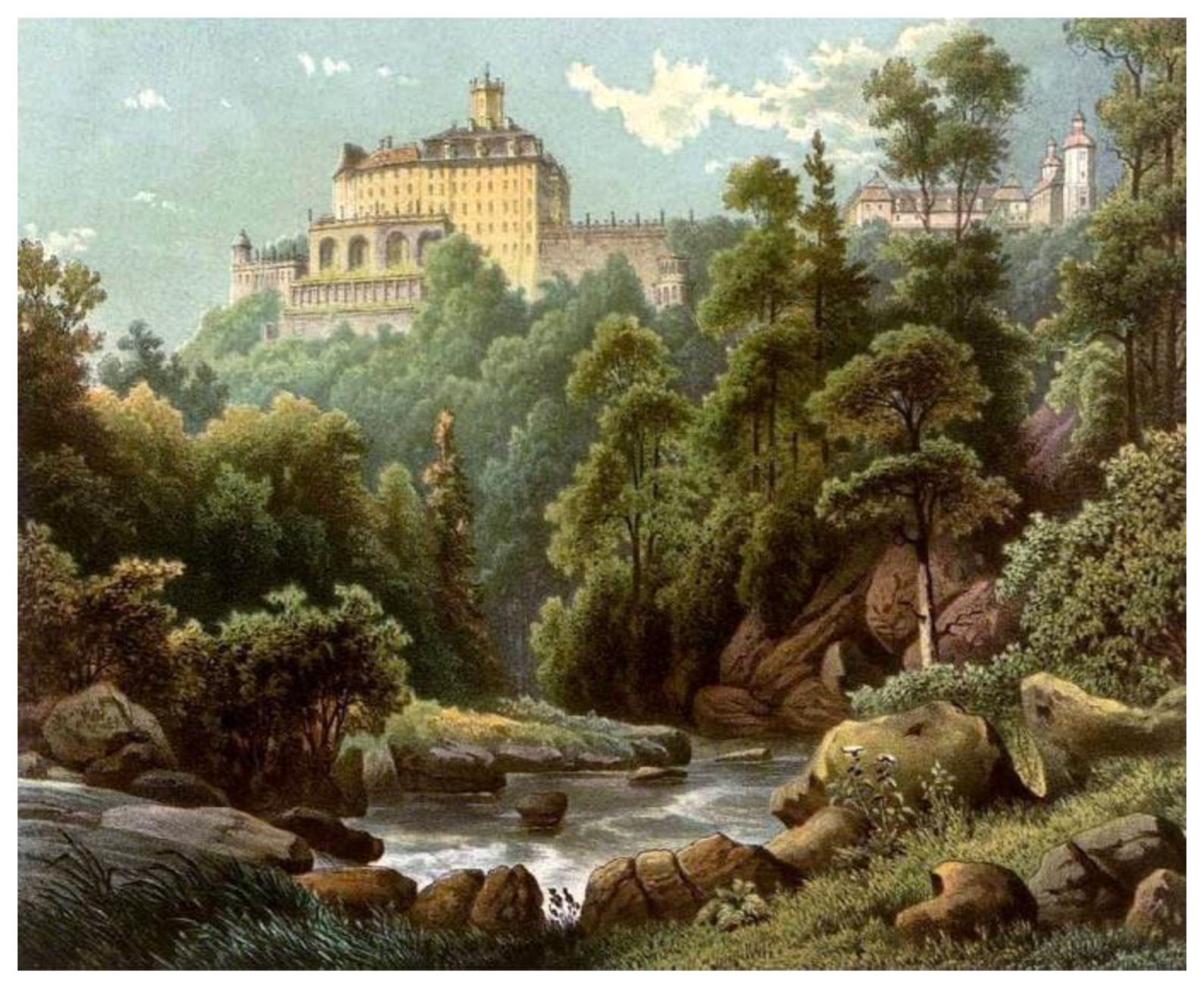




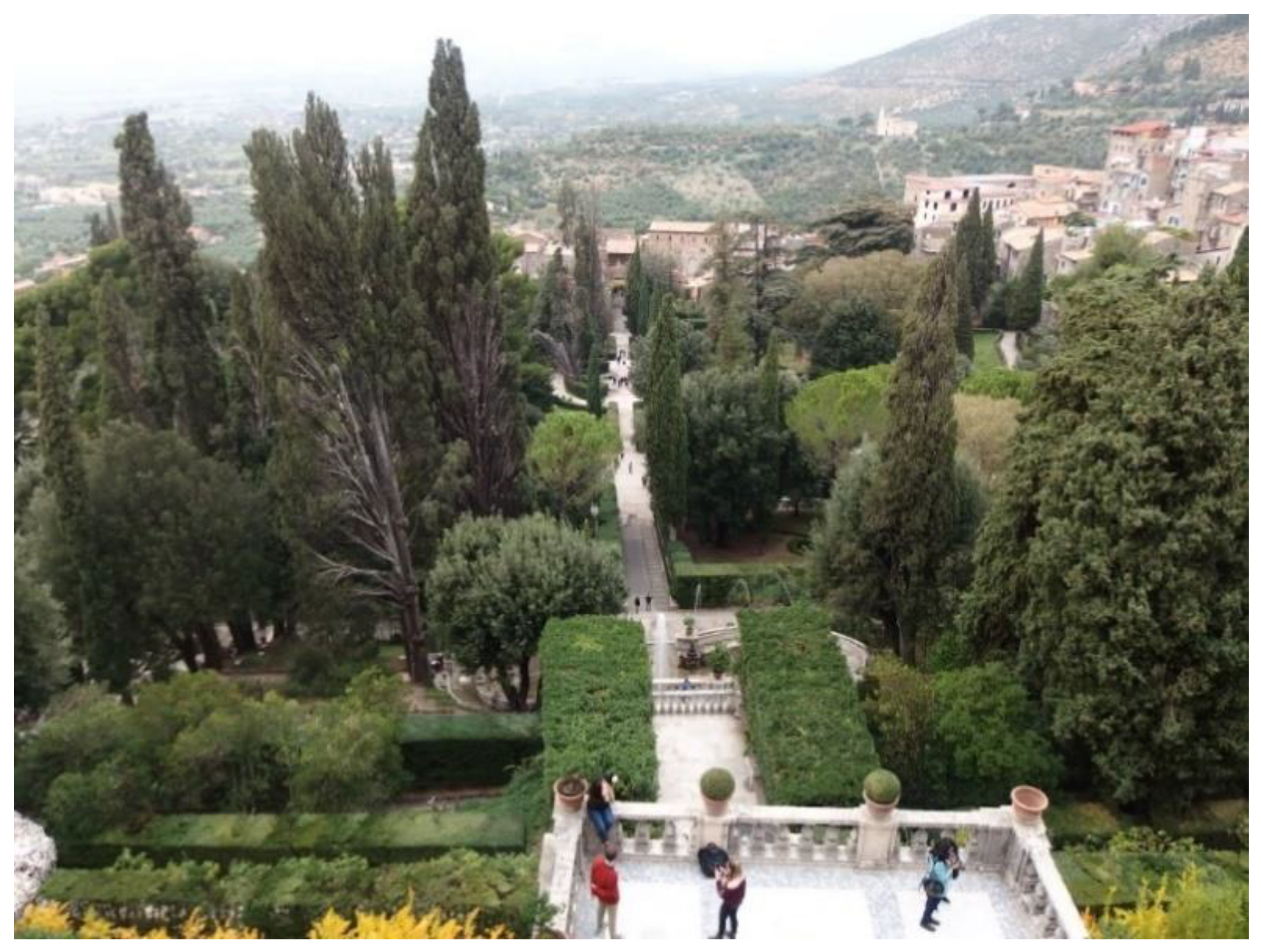
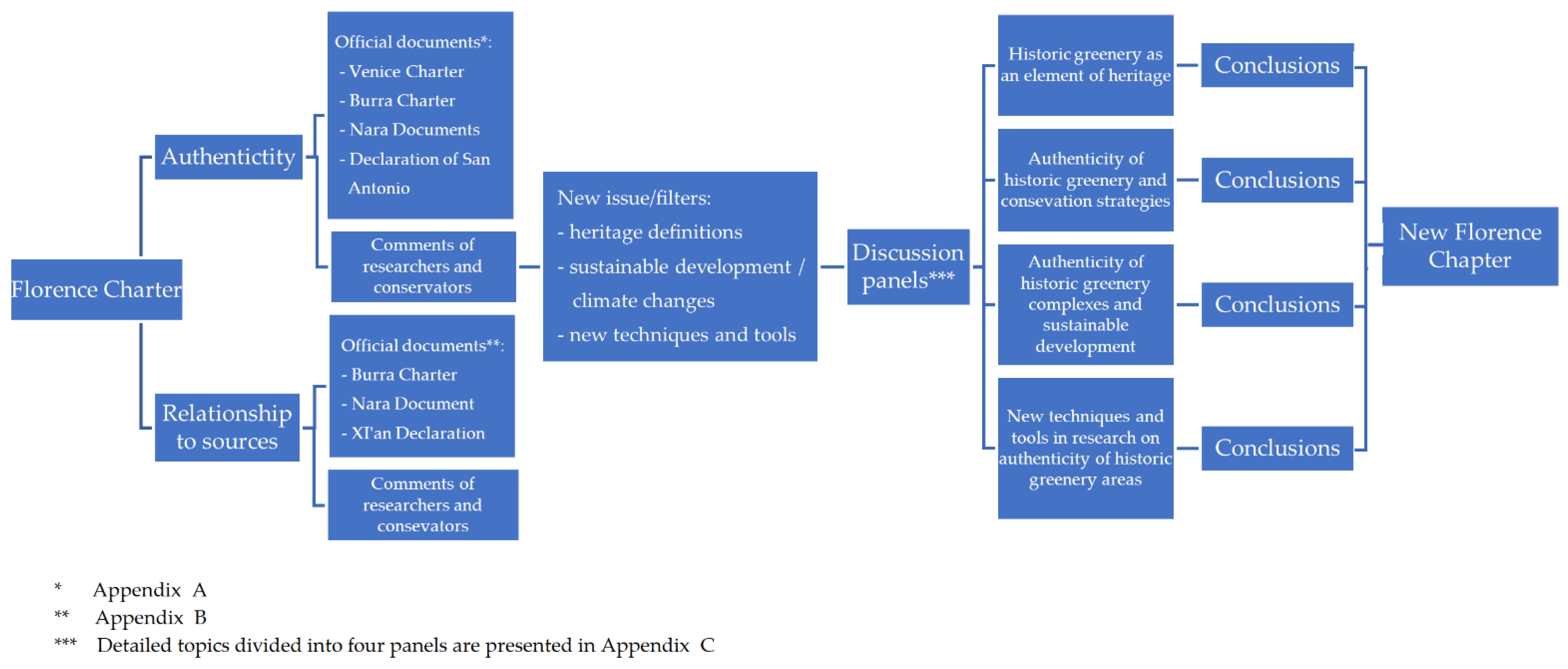
Publisher’s Note: MDPI stays neutral with regard to jurisdictional claims in published maps and institutional affiliations. |
© 2021 by the author. Licensee MDPI, Basel, Switzerland. This article is an open access article distributed under the terms and conditions of the Creative Commons Attribution (CC BY) license (https://creativecommons.org/licenses/by/4.0/).
Share and Cite
Jagiełło, M. Do We Need a New Florence Charter? The Importance of Authenticity for the Maintenance of Historic Gardens and Other Historic Greenery Layouts in the Context of Source Research (Past) and Taking into Account the Implementation of the Sustainable Development Idea (Future). Sustainability 2021, 13, 4900. https://doi.org/10.3390/su13094900
Jagiełło M. Do We Need a New Florence Charter? The Importance of Authenticity for the Maintenance of Historic Gardens and Other Historic Greenery Layouts in the Context of Source Research (Past) and Taking into Account the Implementation of the Sustainable Development Idea (Future). Sustainability. 2021; 13(9):4900. https://doi.org/10.3390/su13094900
Chicago/Turabian StyleJagiełło, Marzanna. 2021. "Do We Need a New Florence Charter? The Importance of Authenticity for the Maintenance of Historic Gardens and Other Historic Greenery Layouts in the Context of Source Research (Past) and Taking into Account the Implementation of the Sustainable Development Idea (Future)" Sustainability 13, no. 9: 4900. https://doi.org/10.3390/su13094900
APA StyleJagiełło, M. (2021). Do We Need a New Florence Charter? The Importance of Authenticity for the Maintenance of Historic Gardens and Other Historic Greenery Layouts in the Context of Source Research (Past) and Taking into Account the Implementation of the Sustainable Development Idea (Future). Sustainability, 13(9), 4900. https://doi.org/10.3390/su13094900





